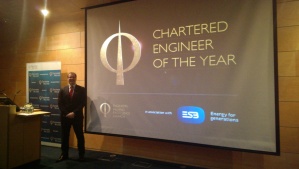Back in 1972 – R.B. Lindsey developed a Wheel of Acoustics and described the scope of acoustics in the broad fields of Earth Sciences, Engineering, Life Sciences and the Arts. As a mechanical engineer I am trained in the fundamentals of physical acoustics and mechanical radiation (Lindsey’s centre circle). However, ever since my PhD, my work has expanded on these fundamentals and my research has had a strong interdisciplinary focus. This page gives a quick overview of some of the projects I have worked on.
1. A combined approach to assessing air quality and noise exposure
This study offers a combined analysis of pedestrian exposure to noise and air pollution within a specific urban setting in Dublin, Ireland – a pedestrian boardwalk overlooking the river Liffey. The impact of this boardwalk on reducing pedestrian exposure to air and noise pollution was examined while modelling experiments were also undertaken to explore the possibility of achieving further reductions in pollutant exposure through better urban design and planning considerations. The results show that the boardwalk has indeed reduced pedestrian exposure to air and noise pollution for its users while the modelling demonstrates that further reductions can be achieved by more strict segregation of pedestrian and road traffic in urban areas. In order to present combined results, a simple air-noise pollution index was developed to quantify the overall improvements for pedestrians using the boardwalk.
For more info please see: http://www.sciencedirect.com/science/article/pii/S1361920909000364
2. Evaluating the impact on noise levels of a ban on private cars in Dublin city centre, Ireland
In an effort to alleviate traffic congestion and increase the efficiency of public transport in Dublin’s city centre, a ‘bus gate’ was introduced to one particularly sensitive area in the city centre. The scheme restricts private vehicles from accessing the area during peak traffic hours with the aim of generating significant journey time-savings for public transport users and reduced noise pollution in the city centre. This study quantified the effect the ‘bus gate’ has had on noise levels in the area. Noise levels were monitored prior to and after the introduction of the scheme and the extent to which the scheme impacted on the noise levels was thus evaluated. The study also estimated the impact extending the ban would have on noise exposure levels in Dublin city centre.
For more info please see: http://www.sciencedirect.com/science/article/pii/S1361920911000629
3. Noise Mapping Ireland’s National Road Network
Excessive exposure to environmental noise can induce annoyance, sleep disturbance, hearing impairment, cardiovascular disease and also impair the cognitive development of children. The World Health Organisation (WHO) have estimated that at least 1 million healthy life years are lost every year from traffic-related noise in western Europe , while the social costs of noise from road and rail across the EU were recently valued at €40 billion a year, about 0.4% of total EU GDP including health care costs . While almost everyone is exposed to too much noise, it has traditionally been dismissed as an inevitable fact of life and has not been targeted and controlled as much as other health risks. Proactive EU legislation is driving change, particularly the Environmental Noise Directive (2002/49/EC) (the “END”), which aims to establish a common framework for the assessment and management of environmental noise in Europe.
Member States are required to undertake two main tasks under the END. Firstly strategic noise maps must be developed for designated areas. A strategic noise map is a graphical representation of environmental noise in an area and includes an assessment of population exposure within that area. It is the first step in the noise management process. Secondly, once noise maps have been developed all Member States are required to develop noise action plans. A noise action plan sets out a process to improve areas identified by the noise map as having noise exposure that is deemed excessive.
In Ireland, the Environmental Noise Regulations 2006 (S.I. No. 140 of 2006) (the “Regulations”) transposed the END into national legislation. The Regulations designate the National Roads Authority (NRA) as the body responsible for the development of noise maps for all national major roads. Under my responsibility noise maps for all major roads in Ireland were successfully developed and delivered on time in 2012. This project covered over 4,000km of roads and represents Ireland’s largest-ever environmental noise assessment.

This work resulted in me being shortlisted for the Engineers Ireland Chartered Engineer of the Year Award 2013.
For more info please see: http://www.sciencedirect.com/science/article/pii/S030147971000366X
4. Service Learning Course: Acoustic Engineering by Design
The Engineering Applications Centre at the University of Hartford is a vehicle for collaboration between the industry and the University in the conduct of applied research involving students, faculty and staff. From time to time a local business will contact the University and request an acoustic assessment of a room that displays poor acoustic design. Instead of addressing this problem straight away, I can use the issue as a student project in my sophomore design class, ES 242.
In this class I teach the fundamentals of architectural acoustics. I divide the class into groups and bring each group to a different room with poor acoustics. We test the room to determine the existing conditions. A model of the room is then created and measurements are used to validate the model. This validated model can then be used to design acoustic treatments. The students are required to write a professional report for delivery to the client thus providing the students with a solid introduction to the world of acoustical consulting.

Students can use SketchUp to demonstrate to the client what the proposed acoustic treatment will look like

